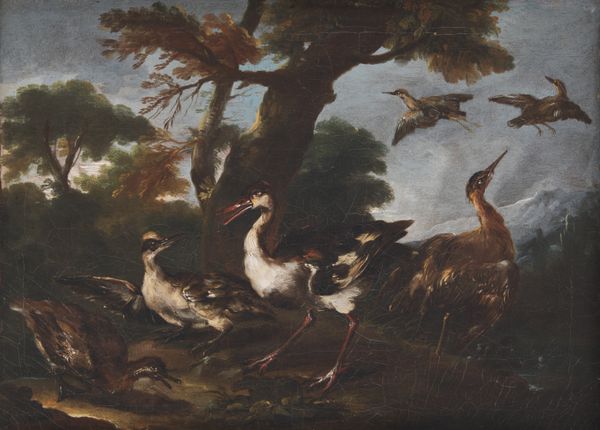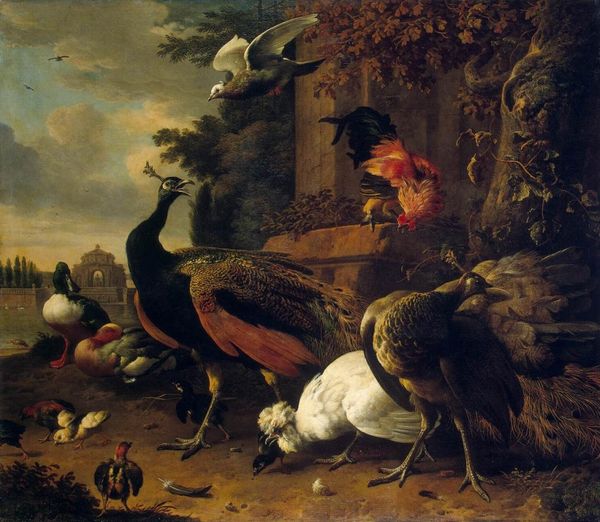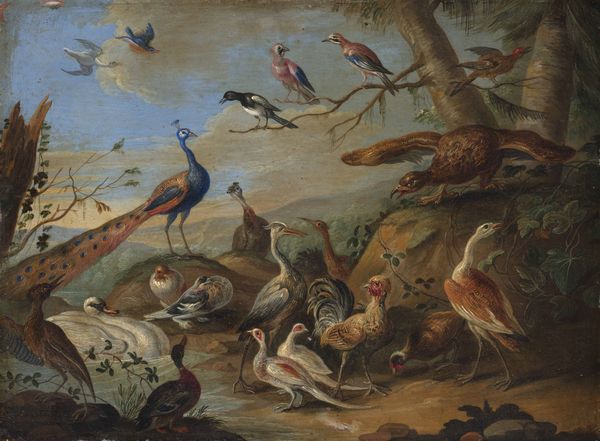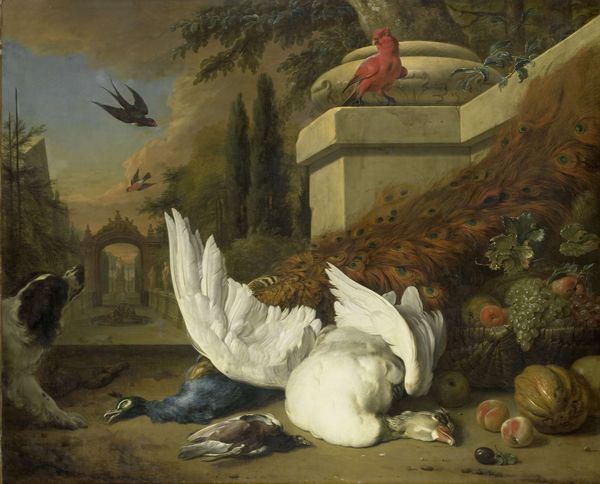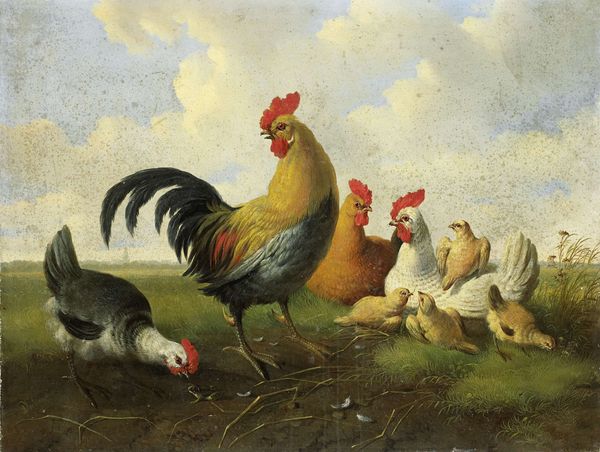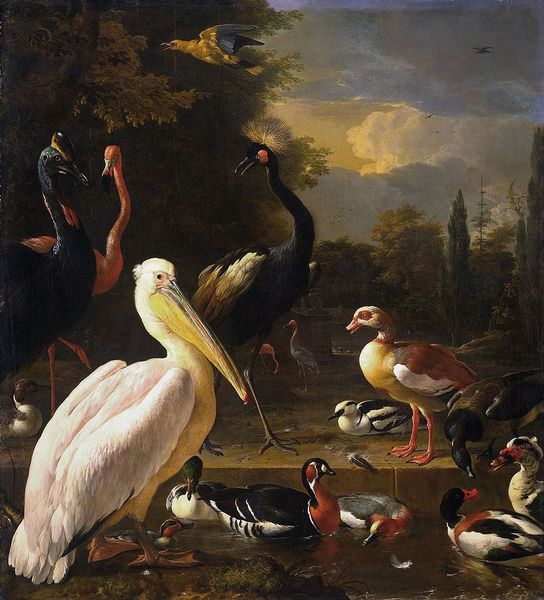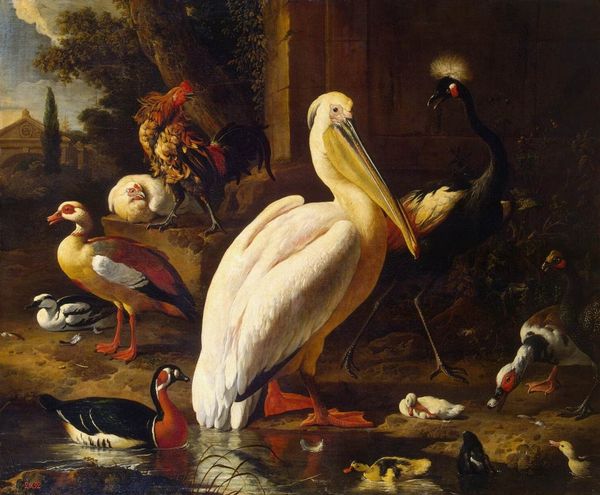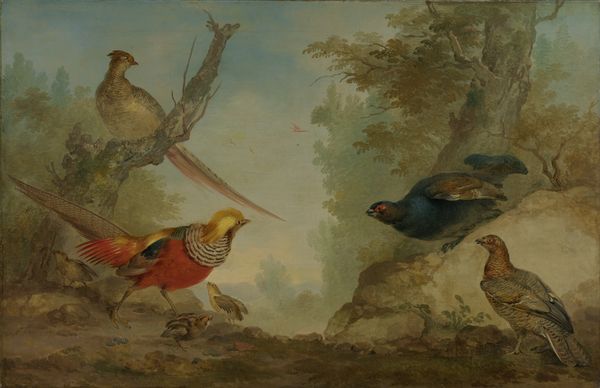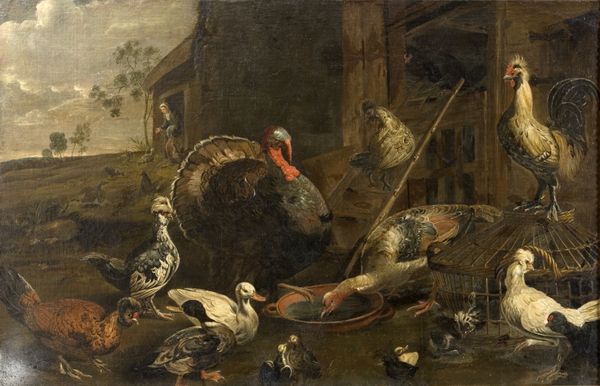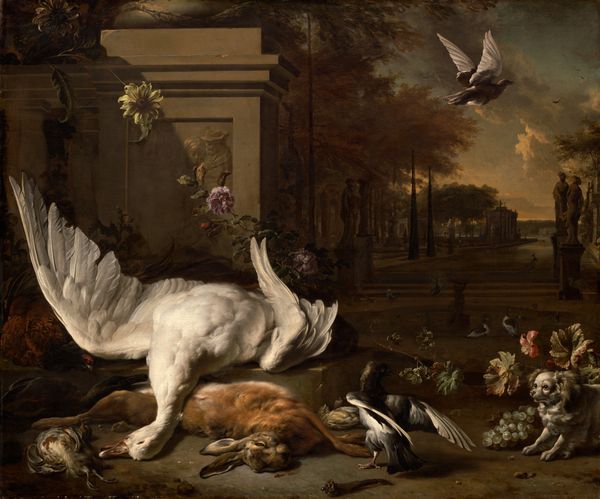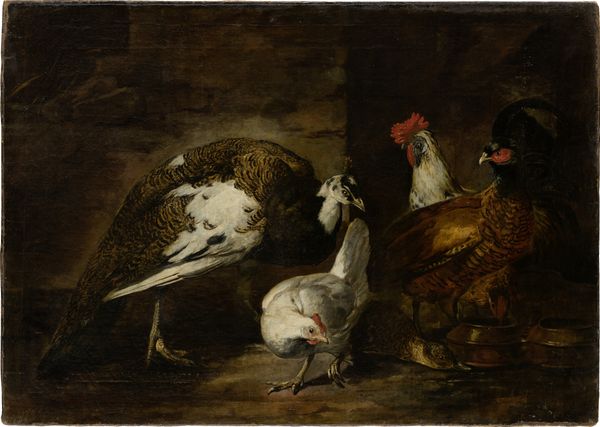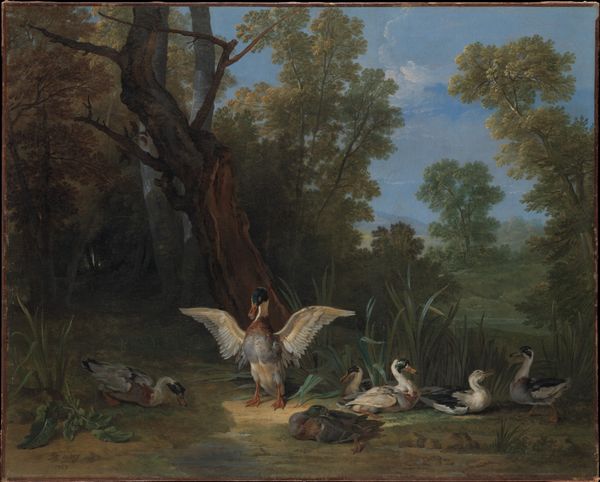
oil-paint
#
gouache
#
baroque
#
oil-paint
#
bird
#
oil painting
#
mythology
#
genre-painting
Copyright: Public domain
Curator: Look at the detail in the plumage! Editor: It's almost overwhelming, isn't it? A feathered frenzy. I find my eye darting from bird to bird, unsure where to settle. Curator: Well, let’s try to bring some order to the viewing experience. What we are observing is an oil painting titled "An Eagle, a Cockerell, Hens, a Pigeon in Flight and Other Birds," attributed to Melchior d'Hondecoeter. Editor: Attributed to? Is the hand uncertain, then? Does the record reflect whether d'Hondecoeter's workshop assisted in its creation, perhaps accelerating its production for a burgeoning market hungry for such scenes? Curator: An interesting point, especially when you consider that d’Hondecoeter built his reputation on similar compositions, practically turning them into a brand. We need to see beyond just the supposed hand. Think about the demand for such representations, the rising middle class eager to adorn their homes. Editor: Precisely! These weren't simply depictions of barnyard fowl. These birds were status symbols! Paintings such as these served a purpose within Dutch society, perhaps reflecting the nation's commercial strength back to itself. But tell me, is that truly an eagle lurking there at the edge of the canvas? Curator: Yes, almost hidden in the background. Perhaps its inclusion is more about adding drama, the implicit threat, than an accurate representation of the everyday. Observe, too, how meticulously Hondecoeter renders each individual feather, almost obsessively. The texture, the light... He transforms humble fowl into objects of luxurious visual consumption. Editor: Right. D'Hondecoeter and his workshop elevated the humble barnyard, creating a theater of animal life meant to resonate, I suppose, with burghers flush with national and personal wealth. Curator: I agree entirely. It's fascinating how the subject matter, seemingly simple, actually speaks to complex economic and cultural currents. Editor: Absolutely. It causes one to ponder the relationship between art, commerce, and national identity within the Dutch Golden Age. Curator: Exactly. By examining paintings like this, we expose not just the hand of the artist but also the hand of society that commissioned it.
Comments
No comments
Be the first to comment and join the conversation on the ultimate creative platform.
